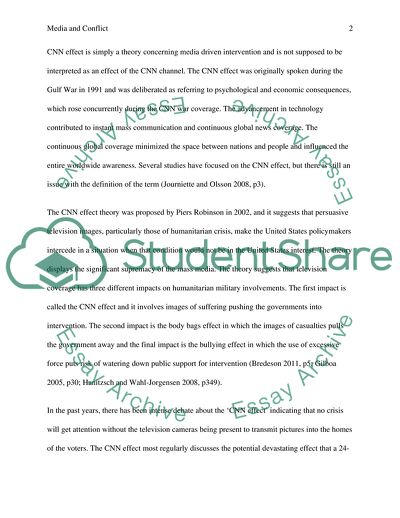Cite this document
(CNN Effect and the Role of 24-Hour Global News as a Catalyst for Humanitarian Intervention Case Study Example | Topics and Well Written Essays - 3000 words, n.d.)
CNN Effect and the Role of 24-Hour Global News as a Catalyst for Humanitarian Intervention Case Study Example | Topics and Well Written Essays - 3000 words. https://studentshare.org/media/1795897-media-and-conflict
CNN Effect and the Role of 24-Hour Global News as a Catalyst for Humanitarian Intervention Case Study Example | Topics and Well Written Essays - 3000 words. https://studentshare.org/media/1795897-media-and-conflict
(CNN Effect and the Role of 24-Hour Global News As a Catalyst for Humanitarian Intervention Case Study Example | Topics and Well Written Essays - 3000 Words)
CNN Effect and the Role of 24-Hour Global News As a Catalyst for Humanitarian Intervention Case Study Example | Topics and Well Written Essays - 3000 Words. https://studentshare.org/media/1795897-media-and-conflict.
CNN Effect and the Role of 24-Hour Global News As a Catalyst for Humanitarian Intervention Case Study Example | Topics and Well Written Essays - 3000 Words. https://studentshare.org/media/1795897-media-and-conflict.
“CNN Effect and the Role of 24-Hour Global News As a Catalyst for Humanitarian Intervention Case Study Example | Topics and Well Written Essays - 3000 Words”. https://studentshare.org/media/1795897-media-and-conflict.


